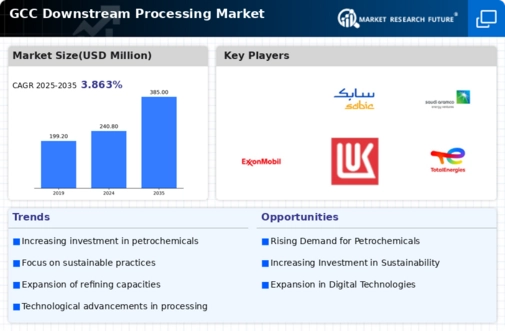The GCC Downstream Processing Market is characterized by a dynamic landscape that integrates various processes such as refining, distribution, and marketing of petroleum products. This market has seen significant growth due to the increasing demand for petrochemicals and improved production technologies. Competitive insights reveal that players within the GCC are striving for operational efficiency and market differentiation, emphasizing innovation and sustainability as key drivers. The integration of advanced technologies and strategic partnerships has allowed companies to enhance their product portfolios while also addressing emerging challenges, such as environmental regulations and shifts in consumer preferences.
The competitive dynamics in this market are shaped by both regional players and global entities, leading to a diverse and robust environment where companies seek to consolidate their position and expand their market reach.Petrochemical Industries Company stands out in the GCC Downstream Processing Market due to its extensive operational capacity and well-established market presence. Known for its high-quality production of petrochemical products, the company has built a strong reputation for reliability and consistency in supply.
Its strengths lie in its state-of-the-art facilities, skilled workforce, and commitment to research and development, which enable the company to innovate continually and improve its product offerings.
Additionally, Petrochemical Industries Company's strategic partnerships with local and international stakeholders have bolstered its market position, enabling it to tap into emerging opportunities and address the evolving needs of the GCC market.Oman Oil Company plays a significant role in the GCC Downstream Processing Market, offering a wide array of products and services that cater to both local and international markets. This company focuses on integrating various segments of the oil value chain, enhancing its operational efficiency and market responsiveness.
Key products include refined fuels, chemicals, and other value-added petrochemical products, which position the company as a critical player in the region. Oman Oil Company's strengths involve a solid operational framework, investments in state-of-the-art refining technologies, and an emphasis on sustainability. The company's proactive approach to mergers and acquisitions has allowed it to diversify its portfolio and expand its market presence, aligning with the growth trajectory of the GCC's downstream sector.









